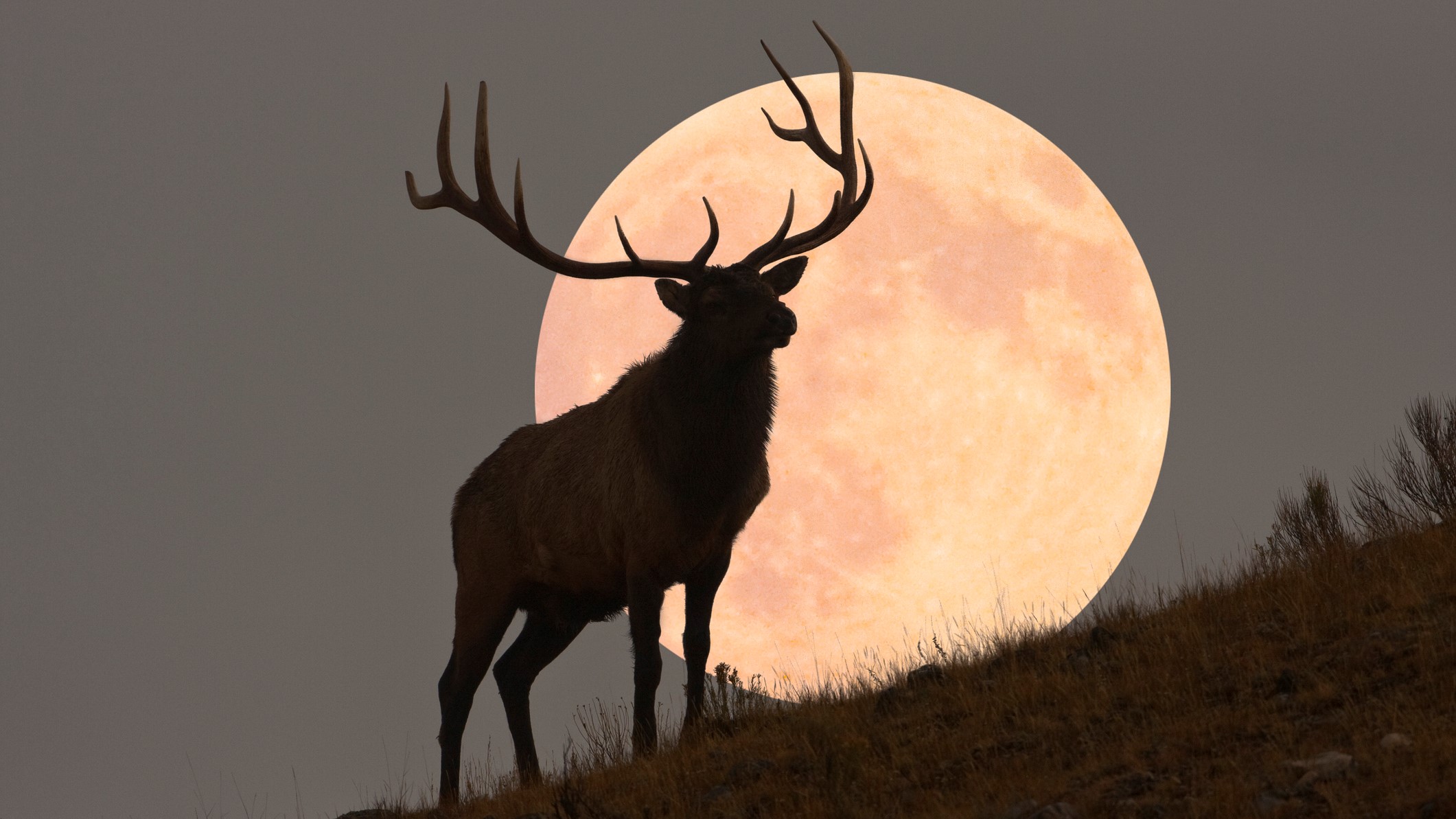Supermoon alert: The biggest full moon of 2022 rises tonight
The 'Buck supermoon' marks the third supermoon in a row.

The largest supermoon of 2022 — July's full Buck Moon — rises above the eastern horizon tonight.
It will make for a striking skywatching sight as "supermoons shine about 16% brighter and appear 6% larger than an average full moon" writes geophysicist Chris Vaughan, an amateur astronomer with SkySafari Software who oversees Space.com's Night Sky calendar.
The Buck Moon, also called the Thunder Moon, or Hay Moon, will reach its full phase at 2:38 p.m. EDT or 11:38 a.m. PDT (18:38 GMT), according to Vaughan. It will shine brightly between the constellations of Sagitarrius and Capricornis.
Related: The brightest planets in July's night sky: How to see them (and when)
The exact time of the event varies depending on your specific location, so you'll want to check out a skywatching app like SkySafari or software like Starry Night to check for times. Our picks for the best stargazing apps may help you with your planning.
A full moon occurs when the moon and sun are opposite each other and sunlight strikes the moon face-on. As such, it can be tricky to see features on the lunar surface in detail during a full moon due to the lack of shadows.

Looking for a telescope for the next stargazing event? We recommend the Celestron Astro Fi 102 as the top pick in our best beginner's telescope guide.
Supermoons occur when the full moon coincides with the moon's closest approach to Earth in its orbit — known as perigee. According to the Farmer's Almanac and Fred Espanak, eclipse expert and retired NASA astrophysicist, there are four supermoons in 2022, in May, June, July and August. Espanak's definition of a supermoon as a full moon within 90% of its closest approach to Earth gives us four to view this year.
Get the Space.com Newsletter
Breaking space news, the latest updates on rocket launches, skywatching events and more!
July's full moon is not just an impressive skywatching target but is also an important event in many different cultures worldwide. Here are some examples of the cultural significance of July's full moon according to NASA:
- Europeans sometimes call this the Hay Moon due to the haymaking season that falls between June and July.
- Hindus, Buddhists, and Jains may call July's moon the Guru Full Moon (Guru Purnima), "celebrated as a time for clearing the mind and honoring the guru or spiritual master," NASA said.
- Theravada Buddhists may call July's moon the Asalha Puha (also known as Dharma Day or Esala Poya — a festival celebrating Buddha's first sermon, NASA said). July's moon also marks the beginning of a three-month annual Buddhist retreat called Vassa.
- July's full moon falls in the middle of the sixth month of the Chinese calendar, Tammuz in the Hebrew calendar and Dhu al-Hijjah — the 12th and final month of the Islamic calendar.
If you're looking for a telescope or binoculars to observe the moon, our guides for the best binoculars deals and the best telescope deals now can help. Our best cameras for astrophotography and best lenses for astrophotography can also help you prepare to capture the next skywatching sight on your own.
The next full moon will occur on August 11 and is known as the "Sturgeon Moon." It will also be a supermoon — the final one of the year.
Fancy taking a more in-depth moonlit tour of our rocky companion? Our ultimate guide to observing the moon will help you plan your next skywatching venture whether it be exploring the lunar seas, mountainous terrain, or the many craters that blanket the landscape. You can also see where astronauts, rovers and landers have ventured with our Apollo landing sites observing guide.
Follow us on Twitter @Spacedotcom and on Facebook.
Join our Space Forums to keep talking space on the latest missions, night sky and more! And if you have a news tip, correction or comment, let us know at: community@space.com.

Daisy Dobrijevic joined Space.com in February 2022 having previously worked for our sister publication All About Space magazine as a staff writer. Before joining us, Daisy completed an editorial internship with the BBC Sky at Night Magazine and worked at the National Space Centre in Leicester, U.K., where she enjoyed communicating space science to the public. In 2021, Daisy completed a PhD in plant physiology and also holds a Master's in Environmental Science, she is currently based in Nottingham, U.K. Daisy is passionate about all things space, with a penchant for solar activity and space weather. She has a strong interest in astrotourism and loves nothing more than a good northern lights chase!










